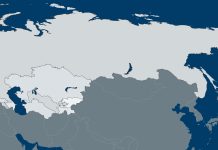Over the past few days, two statements have come to redefine the Middle East – though they were issued not by Israel or Hamas but by the belligerents in a conflict more than a thousand miles away. The first came from Moscow, which said the conflict in Ukraine would be resolved by the end of 2024. The other came from Kyiv, which gave a similar timeframe for a resolution.
Russia’s strategy at the outset of the invasion was to crush Ukraine quickly and decisively. Ukraine’s strategy was to resist long enough to exhaust the Russian will to fight. Neither was successful, and the war has pressed on for over two years. The announcements that the conflict would soon be over, then, were more of a problem for Russia than Ukraine since its reputation for having a formidable army was shattered. In war, success can turn into failure in a matter of days, and the two statements did not seem to be a coordinated effort. Nothing is certain until it is done. Still, the rationale behind both statements seems sound considering the history and current state of the war.
In the meantime, Ukraine must rebuild an economy that not only sustains itself but puts Ukraine on a level relative to the rest of Europe, all while rapidly generating military supplies that can deter further Russian action. Russia’s task is somewhat different. It invaded Ukraine to give itself strategic depth from NATO. Having failed to occupy the country, Moscow has the same imperative but must now look for other, less optimal buffer zones. This may prompt the Kremlin to enhance its influence, and perhaps establish better deterrence, in other potential avenues into Russia – the Baltics, Poland, Hungary and the Balkans, to name just a few. For Moscow, these can be managed politically and economically, so it isn’t exclusively a military matter, but geography dictates that the military threat remains.
Russia must also maintain the balance in the Caucasus, where threats to southern Russia can emanate and where the U.S. and NATO lurk. Perhaps the most important nation in this region is Iran, which is linked by religion and culture to Azerbaijan, a Caucasian nation that poses a potential threat to Russia if backed by a significantly powerful nation. Azerbaijan has served as a buffer between Russia and Iran and is now allied with Russia. Dominating the Caucasus is difficult, but a potential opportunity has opened up in the Middle East.
There is a credible threat of war between Iran on one side and Israel and the United States on the other. The U.S. has little to gain from a war but much to lose. Russia supports such a war, as it would trap the U.S. far to the Russian south while opening the door to Russian support and influence. It would also open the possibility of joint ventures with Iran in the Caucasus via Azerbaijan. Russia and Iran have the same enemy in the U.S. and a network of nations friendly to them both. Together, they make a formidable force. If Russia had influence over a state it previously did not have strong relations with, it would put Russia in a powerful position, particularly after the hit it took in Ukraine. Russia would secure its southern flank and position itself well for future operations.
As it stands, Moscow appears to be sending weapons to Iran while Israel is preparing for a major offensive to which Washington is opposed. This rift is yet another gift to the Russians since it weakens a U.S.-Israel relationship that has been a constant threat to Russian interests in the Middle East. For its part, Iran is wary of a relationship with Russia and the baggage it might bring. But a war could nudge Tehran closer to Moscow despite its misgivings.
This is the link between the Ukraine war and the Arab-Israeli war. The U.S. may find itself fighting a war against Iran when it does not want to. But Russia dominating the Caucasus and having Iran as an ally would make up for its underperformance in Ukraine. It would make Russia a power in the Middle East and put the U.S. in a position of either abandoning the battlefield (and appearing defeated) or entering a brutal and dangerous war (which Russia, through its relationship with Iran, would have some degree of control over).
This may not come to pass, of course. But Israel is on a rampage, the U.S. is riding along, Russia needs a win after Ukraine, and Iran wants to be a major player. This scenario is not as unlikely as it may seem.







